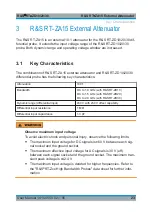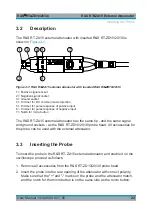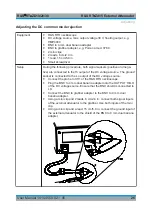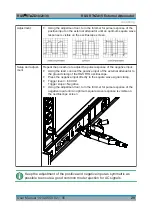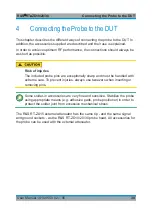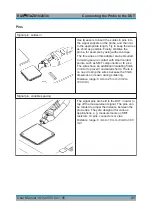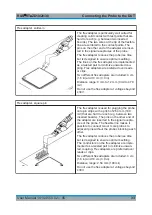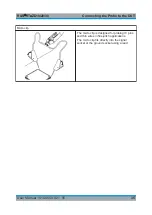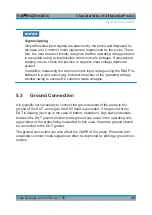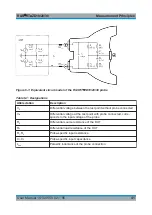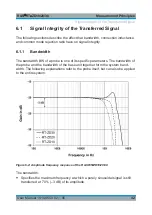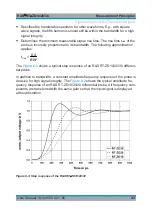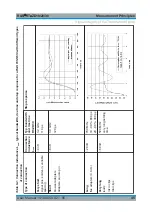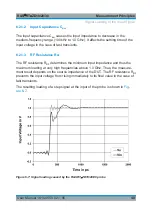
Characteristics of Differential Probes
R&S
®
RT
‑
ZD10/20/30
37
User Manual 1410.4550.02 ─ 05
The output voltage V
out
, which is displayed on the base unit, is obtained by super-
imposing the voltages generated from the differential mode input voltage and
from the common mode input voltage:
cm
vcm
in
vdm
out
V
A
V
A
V
In this equation, A
vdm
is the amplification of the differential mode input voltage and
A
vcm
is the amplification of the common mode input voltage.
An ideal differential probe is expressed as
A
vdm
= 1
and
A
vcm
= 0
. In this case, the
displayed voltage exactly equals to the differential input voltage V
in
between the
two signal sockets, and the common mode input voltage is suppressed.
5.1
Common Mode Rejection Ratio (CMRR)
An
ideal
differential probe outputs a voltage that depends only on the differential
input voltage V
in
between positive and negative input, and suppresses the com-
mon mode voltages. This is equivalent to an infinite common mode rejection ratio
(CMRR).
In contrast, real probes have a finite CMRR, resulting in a small part of the com-
mon mode voltage visible in the output signal. The CMRR is defined as the ratio
of the amplifications of differential and common mode input signals:
vcm
vdm
A
A
CMRR
Example:
If a differential input voltage of 1 V yields an output voltage of 100 mV (A
vdm
= 0.1)
and a common mode input voltage of 1 V an output voltage of 1 mV (A
vcm
=
0.001), the CMRR is 100 (40 dB).
A high CMRR is important if significant common mode signals are encountered at
the probe input, for example:
●
DC voltages for setting the operating points of active DUTs
●
Different ground levels of probe and DUT, e.g. floating DUTs
●
An interference that couples equally to both conductors of a differential trans-
mission line
Common Mode Rejection Ratio (CMRR)

